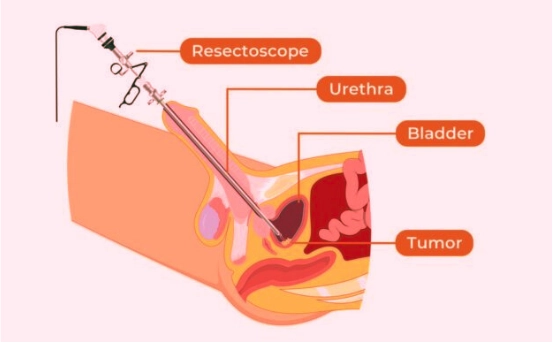Introduction
Eating disorders are not just about food—they’re deeply rooted psychological conditions that impact a person’s physical health, emotional well-being, and overall quality of life. Whether it’s an obsession with weight, extreme food restriction, binge eating, or purging behaviors, eating disorders can have serious consequences if left untreated.
In this detailed guide, we explore what eating disorders really are, their underlying causes, symptoms, how they’re diagnosed, and the treatments available. The goal is to empower patients and families with awareness, reduce stigma, and encourage early intervention.
What Are Eating Disorders?
Eating disorders are serious mental health conditions characterized by abnormal or disturbed eating habits. These disorders often stem from emotional distress, poor body image, trauma, or a desire for control. They are not lifestyle choices but medical and psychological illnesses that require professional attention.
There are several types of eating disorders, but the most common include:
- Anorexia Nervosa – Extreme restriction of food intake, intense fear of gaining weight, and a distorted body image.
- Bulimia Nervosa – A cycle of binge eating followed by purging through vomiting, fasting, or excessive exercise.
- Binge Eating Disorder – Recurrent episodes of consuming large quantities of food, often rapidly and to the point of discomfort, without compensatory behaviors.
- Other Specified Feeding and Eating Disorders (OSFED) – Symptoms that don’t fit the strict diagnostic criteria but still represent a serious disorder.
Causes of Eating Disorders
Eating disorders don’t have a single cause—they result from a combination of biological, psychological, and sociocultural factors. Some of the key contributing factors include:
- Genetic Predisposition :- If there is a family history of eating disorders, depression, or anxiety, the risk increases. Certain genes may influence how the brain regulates hunger, satisfaction, and mood.
- Psychological Factors :- Low self-esteem, perfectionism, a need for control, and poor body image often contribute to the development of eating disorders. Many individuals use food behaviors as a way to cope with stress, trauma, or emotional pain.
- Sociocultural Pressures :- Society’s unrealistic standards of beauty, social media influence, peer pressure, and cultural emphasis on thinness can trigger disordered eating patterns, especially in teenagers and young adults.
- Trauma or Abuse :- A history of physical, emotional, or sexual abuse is a significant risk factor. Eating behaviors may develop as a coping mechanism to deal with feelings of shame, guilt, or helplessness.
- Co-Occurring Mental Health Disorders :- Anxiety, depression, obsessive-compulsive disorder (OCD), and post-traumatic stress disorder (PTSD) are frequently linked to eating disorders.
Symptoms of Eating Disorders
The symptoms of eating disorders can vary depending on the type, but they all involve unhealthy relationships with food and body image. Let’s explore the key symptoms of the major types in detail:
Anorexia Nervosa Symptoms
- Severe restriction of food intake
- Intense fear of gaining weight despite being underweight
- Distorted body image—seeing oneself as overweight even when thin
- Preoccupation with food, calories, and dieting
- Excessive exercise to burn calories
- Menstrual irregularities in females
- Extreme thinness or emaciation
- Brittle hair and nails, dry skin, and low blood pressure
Bulimia Nervosa Symptoms
- Recurrent episodes of binge eating (eating large amounts of food in a short time)
- Feelings of lack of control during binge episodes
- Compensatory behaviors like vomiting, fasting, or using laxatives
- Damaged teeth and gums from frequent vomiting
- Electrolyte imbalance leading to fatigue, muscle cramps, or irregular heartbeat
- Hiding food or eating in secret
- Guilt or shame after eating
Binge Eating Disorder Symptoms
- Frequent episodes of eating unusually large amounts of food, even when not hungry
- Eating very quickly during binge episodes
- Eating alone due to embarrassment
- Feeling disgusted, guilty, or depressed afterward
- No regular use of purging behaviors
- Weight fluctuations or obesity
Common Emotional and Behavioral Signs
- Withdrawal from social activities or family meals
- Mood swings or irritability
- Obsessive rituals around food (cutting into tiny pieces, eating in a specific order)
- Compulsive exercise routines
- Constant checking in the mirror or comparing body size
- Wearing baggy clothes to hide body shape
Diagnosis of Eating Disorders
Early diagnosis is essential to prevent long-term damage and improve recovery chances. Diagnosis typically involves:
- Clinical Interview and Medical History :- A healthcare provider or mental health professional asks detailed questions about eating habits, body image, emotional state, weight history, and physical symptoms.
- Psychological Evaluation :- Standardized questionnaires or psychological assessments may be used to evaluate mental health, self-esteem, and thought patterns.
- Physical Examination :- A doctor will check for signs like low body weight, irregular heartbeat, electrolyte imbalances, and other physical symptoms related to malnutrition or purging behaviors.
- Laboratory Tests :- Blood tests, liver function tests, electrolyte levels, and EKGs help assess the medical impact of disordered eating. Eating disorders often go undiagnosed due to denial or shame. Many individuals hide their behaviors. That’s why family, friends, and caregivers play a crucial role in early recognition and support.
Treatment for Eating Disorders
Eating disorder treatment is highly individualized and usually involves a multidisciplinary team including mental health professionals, nutritionists, physicians, and sometimes family members. The goal is to address not just food behavior, but also the underlying emotional issues.
- Psychotherapy :- Therapy is the foundation of recovery and helps patients explore emotional triggers, reshape distorted beliefs, and develop healthier coping mechanisms. Cognitive Behavioral Therapy (CBT) which Focuses on identifying negative thought patterns and changing harmful behaviors. Dialectical Behavior Therapy (DBT) it Helps manage intense emotions and improve interpersonal skills. Family-Based Therapy (FBT) is Especially effective in children and adolescents, this empowers parents to guide recovery.
- Nutritional Counseling :- Registered dietitians help restore a balanced relationship with food, develop meal plans, and educate patients about healthy eating and nutrition.
- Medical Monitoring :- Regular health check-ups are essential to treat complications like malnutrition, dehydration, or electrolyte imbalances. In severe cases, hospitalization or residential care may be required.
- Medications :- While there are no specific medications to cure eating disorders, doctors may prescribe antidepressants, anti-anxiety drugs, or medications to manage co-occurring conditions like OCD or depression.
- Support Groups :- Peer support plays a crucial role in recovery. Sharing experiences in group therapy or online communities reduces isolation and encourages healing.
Path to Recovery: What to Expect
Recovery from an eating disorder isn’t a straight line. It’s a journey that involves setbacks, emotional growth, and lifestyle change. Key elements for a successful recovery include:
- Early intervention :- The sooner treatment begins, the better the outcomes.
- Consistency in therapy :- Long-term therapy is often necessary to maintain recovery.
- Family and social support :- Loved ones play a vital role in motivation and accountability.
- Patience and compassion :- Recovery takes time, and setbacks should be met with support, not shame.
conclusion
Eating disorders are real, serious, and life-threatening—but they are also treatable. Whether you or someone you know is struggling with disordered eating, the first step is recognizing the issue and seeking help. Early diagnosis, compassionate care, and a structured treatment plan can lead to full recovery and a healthier, happier life.























